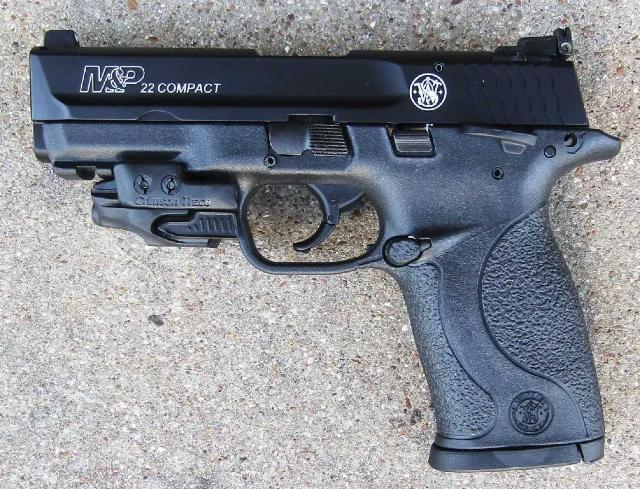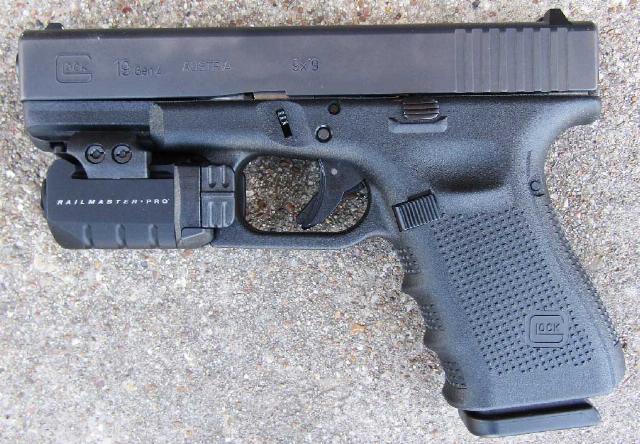Yes, chambered semi autos are safe
Should a semiautomatic handgun be carried with a round in the chamber? Yes. Next question? It’s an issue much on the minds of many, because Americans have been buying guns at the rate of more than a million a month for more than 50 months. Most of those handguns are semiautomatic.
Full disclosure: I learned to shoot handguns with revolvers, attaining expert status, but as semiautos evolved, becoming not only as reliable as revolvers, and with the advent of Glocks, which took over the police and civilian markets, became expert with those as well. I’ve fired and owned every trigger mechanism, single action as in the 1911 and P-35 Hi-Power, double action, double action only and striker fired as in Glocks.
Other than the 1911 and Hi-Power, I’ve never used the safety on any other semiautomatic I’ve owned, and have been entirely safe in so doing. Why not the 1911 and Hi-Power? They’re early 1900s single action designs with cocked hammers and light triggers with short travel. I had the grip safeties on my 1911s pinned in the “off” position. John Moses Browning, America’s greatest firearm inventor, did not include a grip safety on the Hi-Power, which he invented after the 1911.

Graphic: S&W M&P 22 Compact with manual safety. Author.
Here's the ultimate consideration: any gun is safe if the trigger finger is kept in register—straight and in contact with the frame, outside the trigger guard—until fractions of a second before it’s necessary to pull the trigger. After the trigger is pulled, so long as immediate follow-up shots aren’t required, the trigger finger immediately returns to register.
A secondary concern is always using holsters that completely cover the trigger guard and trigger so it’s difficult to accidently pull the trigger when drawing. It’s equally important to always keep the trigger finger in register when reholstering, and to look to ensure neither clothing nor anything else can get in the way and pull the trigger.

Graphic: Glock 19, no manual safety. Author.
But safeties…negligent discharges… Consider revolvers have no manual safeties, yet no one argues they should. How do they differ from chambered semiautos? They have long, heavy double action trigger pulls, which some people consider a safety feature. In a sense, that’s true, but it also makes accurate shooting difficult. Any firearm with a long, heavy trigger pull will be much harder to master, to shoot well, than a firearm with a shorter, lighter trigger pull. The New York City Police Department requires 12-pound triggers on all handguns, and their shooting statistics reflect that dubious choice.
Why would any police force require bad triggers? They’re more afraid of officers making negligent discharges than missing bad guys and accidently shooting citizens, which all too often happens. Also, that choice closes off the option of proper training.
To be sure, a handgun with a shorter, lighter trigger pull is easier to shoot well than the opposite. Glocks have standard 5.5-pound triggers, and while their travel isn’t as short, or as light as some 1911s, it’s a good compromise, as around 70% of the nation’s police have discovered.
Another important factor to consider is if one relies on a manual safety, one must learn how to flick it off milliseconds before firing, and how to flick it back on when firing ceases. In training students carrying 1911-based handguns, I’ve found many have never mastered this, despite the 1911’s safety being nearly ideally placed for most people. Many manual safeties are not nearly so ergonomic, nor so properly designed as to allow quick and positive deactivation and activation.
Smith and Wesson makes many models available with or without a manual safety. In our litigious society, that speaks volumes.
Another vital factor is competent training, more than basic marksmanship training. An instructor competent in teaching such concepts as how to carry one’s handgun and spare magazines, how to properly draw and reholster, proper grip and stance—I recommend Weaver—basic malfunction clearance drills, and if one prefers to use a manual safety—there’s nothing inherently wrong with that--exactly how and when to manipulate it, is essential.
If you’re afraid of your handgun, that’s a sure sign you need that kind of training. By “afraid,” I don’t mean you have a healthy respect for the consequences of mishandling a firearm. That’s essential too, particularly for “professionals,” who can sometimes become a little lax. If you’re not completely confident in your knowledge of how your handgun functions, how to clean it, and how and when to employ it, you need sufficient training to gain that confidence.
Once again, carrying a modern semiautomatic with a round in the chamber is entirely safe, even if the handgun does not, by design, have an external, manual safety…so long as one keeps the trigger finger in register, and follows the other, basic, universal safety rules.
Mike McDaniel is a USAF veteran, classically trained musician, Japanese and European fencer, life-long athlete, firearm instructor, retired police officer and high school and college English teacher. He is a published author and blogger. His home blog is Stately McDaniel Manor.
FOLLOW US ON
Recent Articles
- Greenland: How Trump Can Deal with the Raging Danes to America's Advantage
- Greenland at the Crossroads: Why U.S. Leadership is Crucial
- How the Death Penalty Should Work
- Mr. Schumer — You Make No Sense!
- The Price of Reciprocity: Why President Trump’s Tariffs Make Strategic Sense
- The Least Dangerous Branch No More
- Is Bipartisan Nationalism Possible?
- Sitting Down for the 'College Talk'
- Trump’s Tariffs Will Not Cause Inflation
- The Republican Off-Cycle Election Challenge
Blog Posts
- Chief Justice Roberts, Norm Eisen, and the appearance of impropriety
- Tim Walz calls Elon Musk 'a loser'
- Taming the military-transfer complex
- Could it be that Trump really knows what he’s doing?
- Tariffs: Burn it all down, rule over the ashes
- Adobe meltdown
- Smart nations lining up for tariff deals with President Trump -- and you can just tell which ones they are
- What a month of April 1968
- Tesla vandals and keeping the republic
- The Nashville Police report--sort of
- Florida’s opportunity to defang the property tax monster
- Iran: Israel and the USA have the same objective
- Fighting for babies while black
- America is raising feral children
- Unmanifest Destiny: Is America heading for the ash heap of history?






